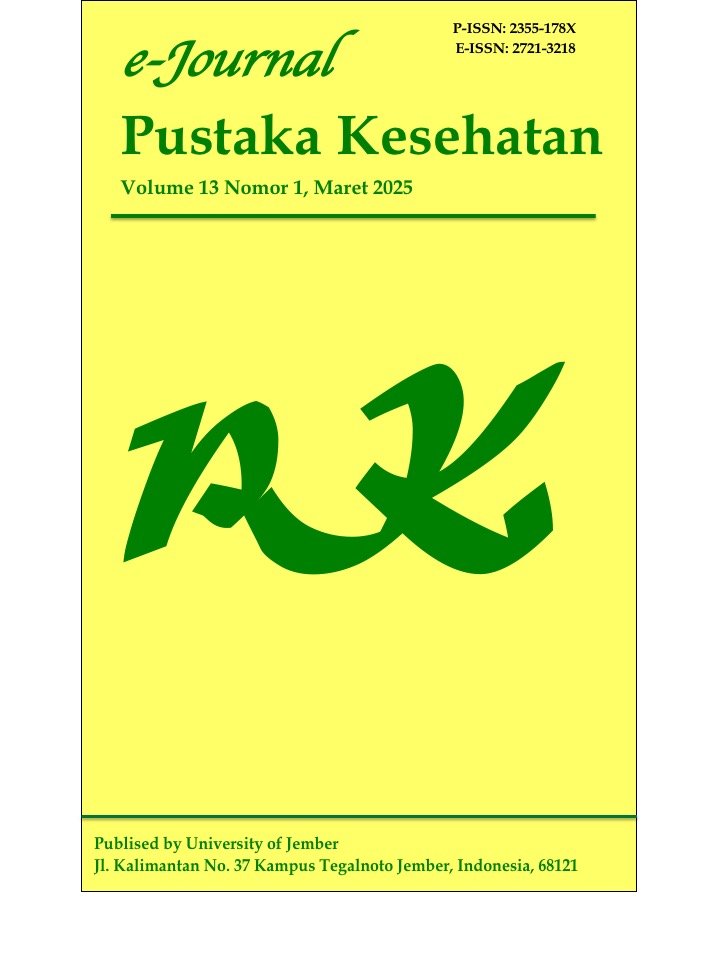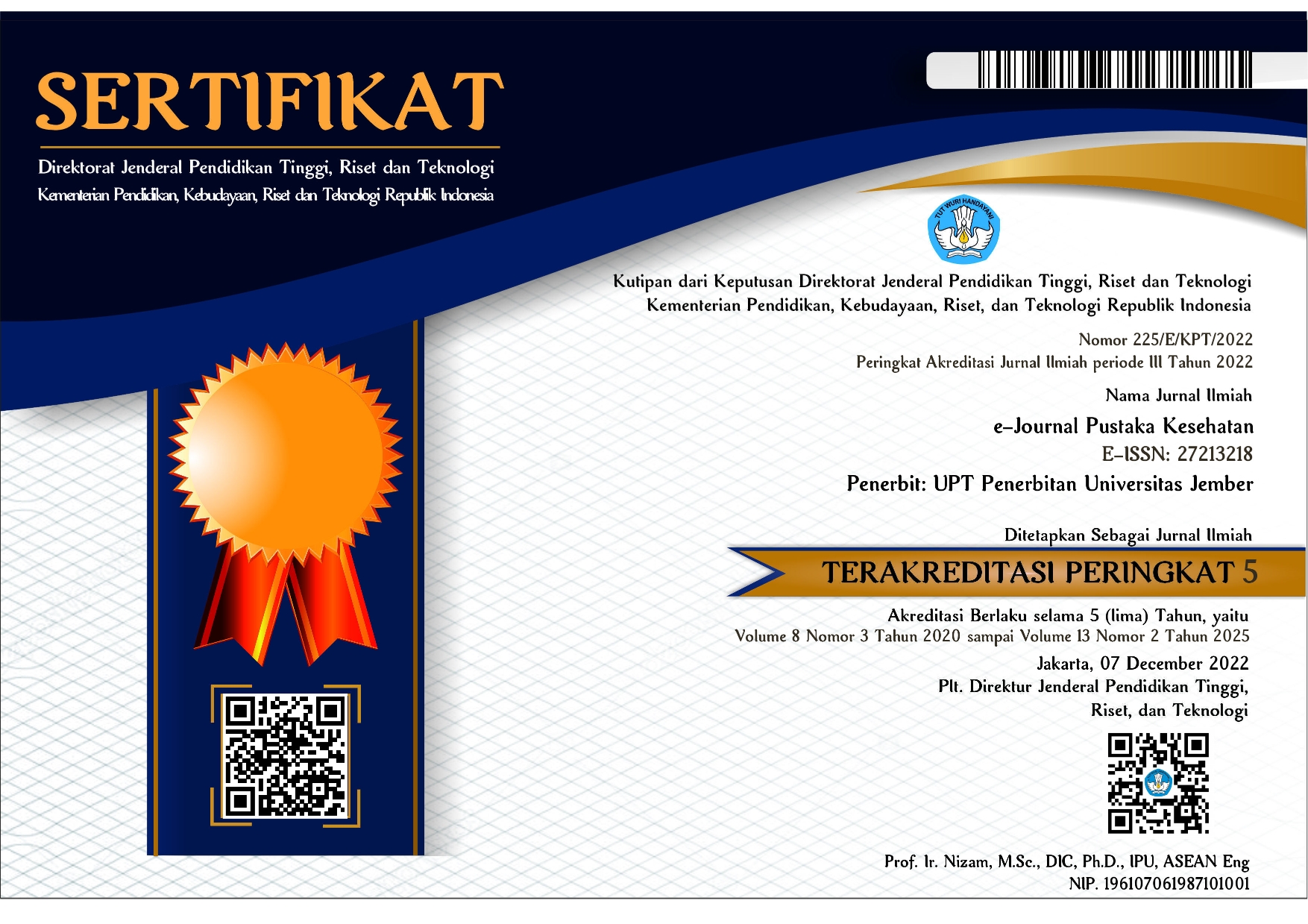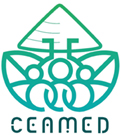Hubungan Harga Diri dengan Kualitas Hidup pada Pasien Hemodialisis di RSUD Tabanan
Keywords:
hemodialysis, quality of life, self-esteemAbstract
Chronic kidney disease (CKD) patients with hemodialysis have problems related to the impact of hemodialysis, namely, physiological and psychological stressors, which result in decreased quality of life. One of the causes of decreased quality of life is self-esteem, which is associated with dependence, role changes, changes in self-image, and sexual dysfunction. This study aimed to determine the correlation between self-esteem and quality of life in hemodialysis patients in the hemodialysis room at Tabanan Hospital. The study was conducted using an analytical observational design with a cross-sectional approach, it conducted from September to October 2023 with a total sample of 73 respondents selected by consecutive sampling technique. Data were collected using the Self-Esteem Scale questionnaire and the WHOQOL-BREF quality of life questionnaire from the WHO. Data were analyzed using Spearman's rho test. The results showed that most of the respondents (60.3%) or 44 respondents have high self-esteem, and the majority (64.4%) or 47 respondents showed moderate quality of life. Statistical analysis resulted in a p-value of 0.046. It can be concluded that there is a correlation between self-esteem and the quality of life in routine hemodialysis patients at the hemodialysis room of Tabanan Hospital. It is recommended that nurses always provide an innovative education about the importance of self-esteem in improving the quality of life.
Downloads
References
[1] Kemenkes RI. Survey Demografi dan Kesehatan Indonesia. Survei Demografi dan Kesehatan Indonesia 2017. 2019.
[2] Smeltzer S., Bare B., Hinkle JL, Cheever K. Handbook for Brunner and Suddarth’s Textbook of Medical-Surgical Nursing. Lippincott Williams & Wilkins. 2015. 229–250 p.
[3] Black JM& H. Keperawatan Medikal Bedah. In: 3. Jakarta: EGC; 2014. p. 1124.
[4] Tannor EK, Norman BR, Adusei KK, Sarfo FS, Davids MR, Bedu-Addo G. Quality of life among patients with moderate to advanced chronic kidney disease in Ghana - A single centre study. BMC Nephrol. 2019;20(1):1–10.
[5] Rustandi H, Tranado H, Pransasti T. Faktor-Faktor yang Mempengaruhi Kualitas Hidup Pasien Chronic Kidney Disease yang Menjalani Hemodialisa di Ruang Hemodialisa. J Keperawatan Silampari. 2018;1(2):32–46.
[6] Mailani F. Kualitas Hidup Pasien Penyakit Ginjal Kronik Yang Menjalani Hemodialisis: Systematic Review. NERS J Keperawatan. 2021;11(1):1.
[7] Mulia DS, Mulyani E, Pratomo GS, Chusna N. Kualitas Hidup Pasien Gagal Ginjal Kronis yang menjalani Hemodialisis di RSUD Dr. Doris Sylvanus Palangka Raya. Borneo J Pharm. 2018;1(1):19–21.
[8] Irene I, Yemina L, Maria S. Kualitas Hidup Pasien dengan Penyakit Ginjal Kronis dengan Terapi Hemodialisa di RS PGI Cikini. J Keperawatan Cikini. 2022;3(1):1–6.
[9] Din VW. Hubungan Self-esteem dengan kualitas hidup pasien gagal ginjal kronik yang menjalani hemodialisis di RSUD Wates. Anal Biochem. 2018;11(1):1–5.
[10] Stuart GW. Principle and practice of Psychiatric nursing, 10th Edition. St. Louis. 2013.
[11] Smeltzer S&, Bare B. Buku Ajar Keperawatan Medikal Bedah Edisi 8. Jakarta EGC. 2017;
[12] Stuart. Prinsip dan Praktik Keperawatan Kesehatan Jiwa Stuart ( Set Buku 1 dan 2 ) ( Edisi Indonesia ) : Gail W . Stuart , Budi Anna Keliat , Jesika Pasaribu ( 2016 ) Sinopsis. 2016;
[13] Archentari KA, Gasela V, Nuriyyatiningrum NAH, Iskandarsyah A. Harga Diri Dan Kualitas Hidup Pada Pasien Dengan Chronic Kidney Disease Yang Menjalani Hemodialisis. J Psikol. 2017;16(2):138.
[14] Ngara YW, Rosdiana Y, Rahayu W. Harga Diri Dengan Kualitas Hidup Pasien Gagal Ginjal Kronik (GGK) Yang Menjalani Hemodialisa Pada Masa Pandemi Covid-19. Care J Ilm Ilmu Kesehat. 2022;10(2):304–14.
Downloads
Published
Issue
Section
License
Copyright (c) 2025 Ni Nyoman Nova Kusuma Dewi, Ni Putu Dita Wulandari, Si Putu Agung Ayu Pertiwi Dewi

This work is licensed under a Creative Commons Attribution-ShareAlike 4.0 International License.
e-Journal Pustaka Kesehatan has CC-BY-SA or an equivalent license as the optimal license for the publication, distribution, use, and reuse of scholarly work. Authors who publish with this journal retain copyright and grant the journal right of first publication with the work simultaneously licensed under a Creative Commons Attribution-ShareAlike 4.0 International License that allows others to share the work with an acknowledgment of the work's authorship and initial publication in this journal.







